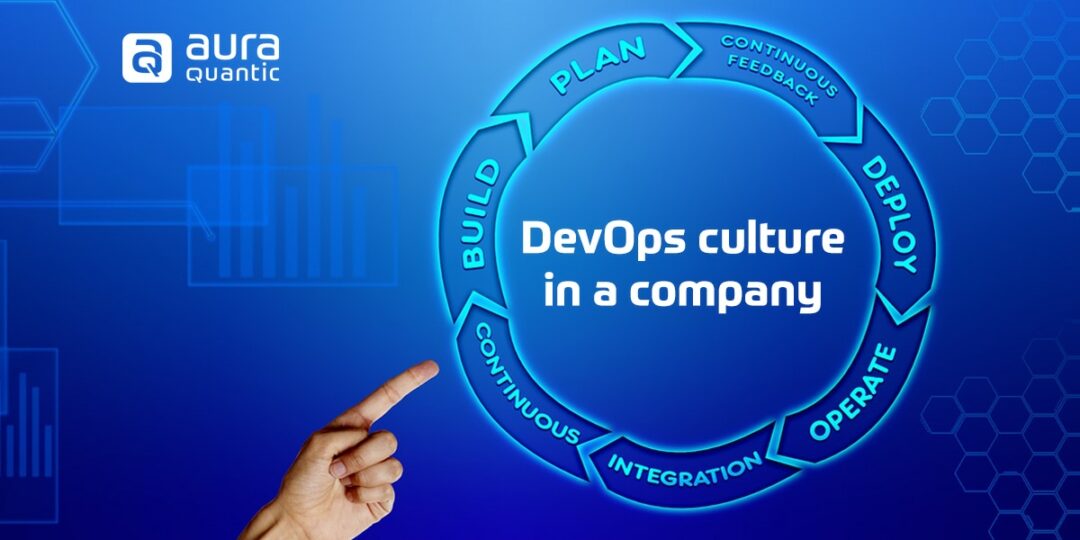DevOps culture in a company
Blog: AuraQuantic Blog
The DevOps culture in a company aims to reduce
software development and delivery times to meet the continuous demand for new
products and services.
It defines a set of work practices, aimed at breaking
down existing barriers between development teams and systems, promoting a cultural
and organizational change that encourages collaboration and communication with
the aim of reducing organizational silos.
Furthermore, it involves a gradual change that leverages tools and automation to improve application delivery times, and measures as much as possible to optimize the process.
It is important to note that with DevOps, errors are
part of the work dynamics, and are always attributable to process failures not the
people.
“DevOps is a philosophy that guides software development, one that that
prioritizes people over process and process over tooling. DevOps builds a
culture of trust, collaboration, and continuous improvement.”
WHAT IS DEVOPS?
DevOps refers to the “development” and
“operations” teams and includes a set of work practices that
encompass security systems, collaborative work, data analysis, and process
automation related to the creation , distribution and deployment of
applications.
Its main purpose is to streamline the necessary processes
for an idea to become an application in a production environment and generate
value for a user.
To achieve this goal, it is necessary for developers
to work closely with the IT operations teams that are responsible for
compiling, testing and launching applications, without sacrificing the
reliability and security of the system.
WHY DID THE DEVOPS CULTURE
ARISE IN BUSINESS?
One of the
biggest problems companies face when managing their services is the notorious
war between the development and operations departments. Naturally, the
programmer wants to write code and have it published, but the operations team
must ensure that the software works on the platform and conforms with security
standards.
Many publications refer to this barrier as the wall of
confusion.
However, the
reality is that today companies cannot keep up with the continuous demand for
software; they must foster a culture of collaboration between both departments,
and use an Agile culture for implementation.
The Agile methodology in the world of
infrastructure and systems administration
“Our highest
priority is to satisfy the customer through early and continuous
delivery of valuable software.”
Today, it is impossible to understand application development without a DevOps approach. Companies are evolving their application delivery models to adapt them to an environment of continuous change, and incorporating Lean and Agile methodologies to improve software quality and delivery times.
Using the Lean criterion “Think big, act small, learn
fast ”not only helps to reduce development times, but also facilitates
monitoring and troubleshooting.
Automating the continuous software development and delivery process and releasing smaller but more frequent changes contributes very effectively to improving our software, but we need to open a channel with our users to get their feedback to establish a cycle of continuous improvement.
DevOps is not
just about accelerating software creation, it involves creating new types of
software that are better suited to the pace of continuous distribution. Generally
speaking, DevOps teams tend to design their software systems using a
microservices architecture, and linking these services with APIs.
AURAQUANTIC, A DEVOPS CULTURE MODEL
AuraQuantic’s low code development platform allows the
design and execution of applications, centralizing people’s activities, and
integrating with any other software on the market (ERP, AI, RPA, etc.).
Software development with AuraQuantic comprises five
stages:
- Modeling
- Simulation
- Execution
- Monitoring
- Optimization
Modeling
Processes are designed and built in this phase.
Being 100% focused on citizen development, it eliminates
the traditional communication difficulties between business and technical
personnel. In addition, thanks to its automatic review features, it guarantees
the correct design and execution of the software, significantly reducing process
development time.
Simulation
With AuraQuantic it is possible to carry out process
execution ‘simulations’ to discover bottlenecks, uneven work distribution,
excessive times, costs, etc.
Execution
Once the modeling and simulation stages are complete,
we can proceed to run the software in the testing phase to later upload the new
application to the production environment.
Monitoring
Once the users are working normally, process monitoring
allows you to control and ensure that the execution is carried out as planned
and that there are no deviations that need correction.
Optimization
Thanks to AuraQuantic’s
special features, modifications can be made instantly, in most cases without
the need to use programming code, and applied immediately.
AuraQuantic manages process versioning control, even when there are processes in production and you want to make changes to the model.
AURAQUANTIC THREE ENVIRONMENTS
AuraQuantic offers the possibility of working with
different versions of an application which can be maintained in its three work
environments: development, testing and production.
Thus, software can be in production while a team of
programmers works on a version of the program in their development or testing
environments.
Thanks to these AuraQuantic programming environments,
the tool manages the distribution and continuous implementation of DevOps
operations.
On the other hand, there is also the possibility of
separating the environments into physically separate facilities through the option
of contracting 3 Environments.
The post DevOps culture in a company appeared first on AuraQuantic.
Leave a Comment
You must be logged in to post a comment.








